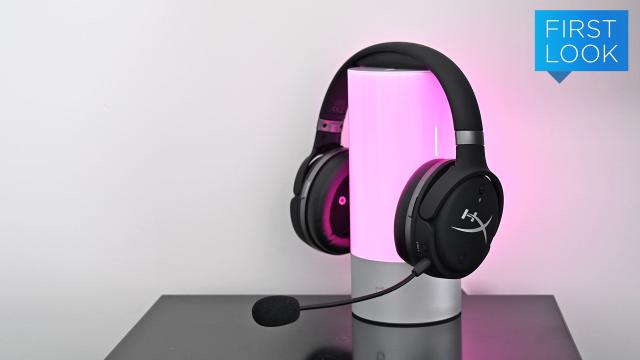For years, I’ve used a stand mic and a pair of regular headphones as my setup for gaming audio. That’s because while a headset is easier to use, keeping my microphone and headphones separated made things easier to upgrade and connect to various devices
But with the HyperX’s new Cloud Orbit S, I may have finally found a headset worth trading in that flexibility for even better sound. By utilising tech from Audeze and Waves Nx, the Cloud Orbit S delivers some truly impressive spatial sound that adds an extra level of immersion to almost anything you do.
The Cloud Orbit S were announced way back at CES 2019 in January, but now they are finally ready for sale. To create the $US330 ($488) Cloud Orbit S, HyperX borrowed some of the same tech used in Audeze’s $599 Mobius gaming headset — including its signature planar magnetic drivers and spatial audio smarts — for use in the Cloud Orbit S.
This gives HyperX’s lastest gaming headset incredibly rich audio that to my ears, has practically zero distortion, so things sound crisp from high to low.
Where things get really interesting is when those drivers get enhanced by Waves’ Nx software which allows the headphones to simulate a 7.1 surround sound setup, while also using built-in head tracking to create 3D spatial audio. That means when you turn your head while watching a movie or playing a game, the sound adjusts accordingly, so you get an even better sense of where you are in a specific environment.
This even works in YouTube videos, which can be somewhat disconcerting when you turn head to look at a clock or another monitor, and suddenly it sounds like Matty Matheson is cooking up a frankly ridiculous lasagna three feet next to you.
It’s really an impressive feat, especially considering much of this tech works without any special software. Though of course, installing HyperX and Audeze’s free app makes things even better, as from there, you can more accurately calibrate the headset’s tracking, select from a number of various audio profiles (including multiple 3D sound options), while also keeping tabs on things like battery life.
In addition to its fancy spatial audio, the Cloud Orbit S comes with a bunch of extra cables including a 3.5mm cord, a double-sided USB-C cord, and a USB-A to USB-C, so you can connect the Cloud Orbit S to pretty much anything that can output audio.
There’s also a detachable sound-cancelling mic, so after you’re done gaming, you can unplug the mic and use the Cloud Orbit S on the bus or subway without looking like a weirdo. You just have to remember, that when connected to a device like a phone that can’t supply the headphones with power, the Cloud Orbit S’s 3D audio abilities only last for around 10 hours before they’ll need to be recharged.
However, after using the Cloud Orbit S for a short time, I noticed one problem that didn’t really have anything to do with the tech itself. When you’re staring at a screen, you don’t really move your head that much, because all the action is already in front of you.
This means much of the Cloud Orbit S’s 3D audio is wasted, unless you go out of your way to look around. However, the same isn’t true of VR, which is where the Cloud Orbit S really shine.
A lot of newer VR headsets have built-in headphones that support 3D audio for this exact reason, because when audio from a VR experience sounds flat compared to the virtual world your eyes are seeing, it breaks the immersion. So if you’re someone with a first-gen HTC Vive or Oculus Rift looking to enhance VR without buying a whole new headset, the Cloud Orbit S is a great companion.
That said, $US330 ($488) is a lot to spend on fancy headphones whose most interesting feature is only useful part of the time. Thankfully, that what’s where the standard Cloud Orbit headset comes in, which features the same design, ports, and planar magnetic drivers as the Cloud Orbit S, but without the head tracking tech for $US300 ($444) instead of $US330 ($488).
Still, putting Audeze’s fantastic drivers in a gaming headset is nice just from a simple cost-savings perspective. But for this much money, we’re still talking about a luxury gaming peripheral as opposed to something truly essential.
I’m not sure if I’d shell out my own money for them, but after going back to standard stereo cans, I’ll never be truly satisfied now that I know what I’m missing.
